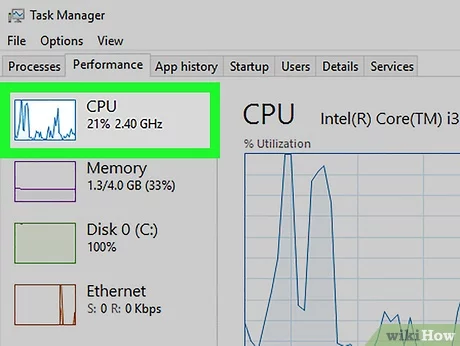Demystifying Uptime: Uncovering How Long Your PC Has Been Running

Ever wondered how long your trusty computer has been chugging away, silently processing data and powering your digital adventures? The answer lies within the enigmatic realm of uptime, a hidden metric silently tracking your PC’s tireless efforts. Unraveling this mystery is simpler than you might think, requiring just a few clicks and a dash of technical know-how. So, buckle up, fellow tech explorers, as we embark on a quest to unearth the secrets of your PC’s runtime!
Windows: Unveiling the System’s Secrets
For Windows users, the path to uptime enlightenment is paved with two handy tools: Task Manager and Command Prompt.
1. Task Manager: This readily available utility offers a quick and visual way to check your PC’s uptime. Here’s how:
- Right-click on the taskbar and select “Task Manager.”
- Click on the “Performance” tab.
- Look for the “Up time” section at the bottom of the window.
Voila! The displayed time reveals how long your PC has been running since its last restart.
2. Command Prompt: For the command-line enthusiasts, the net stats srv command offers a more detailed view of uptime. Open Command Prompt and type the command, followed by Enter. The output will display various system statistics, including the uptime in a format like “Statistics since [date and time]”.
Beyond Windows: Unveiling Uptime Across Operating Systems
The quest for uptime knowledge extends beyond Windows. Here’s how to uncover this hidden metric on other popular operating systems:
1. macOS: For Mac users, the path to uptime lies within the Activity Monitor. Open the Spotlight search bar and type “Activity Monitor,” then launch the application. Click on the “Window” menu and select “CPU History.” The uptime will be displayed at the bottom of the window.
2. Linux: For Linux users, the terminal comes to the rescue. Open a terminal window and type the command uptime. The displayed output will reveal the amount of time your system has been up and running, along with additional information like the load average and number of users logged in.
Bonus Tip: Uncovering Hidden Uptime Gems
Remember those times your PC went to sleep or hibernated? Fear not, intrepid uptime investigators! Some operating systems, like Windows 10 and later, offer detailed system logs that track sleep and hibernate time. These logs can be accessed through tools like Event Viewer (Windows) or System Profiler (macOS) and used to calculate the total uptime even with power-saving breaks.
The Power of Uptime Knowledge:
Knowing your PC’s uptime isn’t just a fun geek trick. It can be valuable for:
- Troubleshooting: High uptime might indicate resource-intensive processes draining your system’s performance.
- Scheduling maintenance: Regularly restarting your PC helps clear memory and optimize performance, so knowing uptime can guide your restart schedule.
- Understanding usage patterns: Uptime data can reveal how you typically use your PC, helping you optimize settings and power management.
So, the next time you find yourself contemplating your PC’s tireless service, remember the secrets of uptime. With a few simple steps, you can unlock the mysteries of your PC’s runtime and gain valuable insights into its inner workings. Now go forth, fellow tech adventurers, and let your uptime knowledge shine!
Remember, the journey to uptime enlightenment is yours to own. Explore different methods, delve deeper into system logs, and become the master of your PC’s hidden metrics. The power of knowledge awaits, so go forth and conquer the mysteries of your digital companion!




